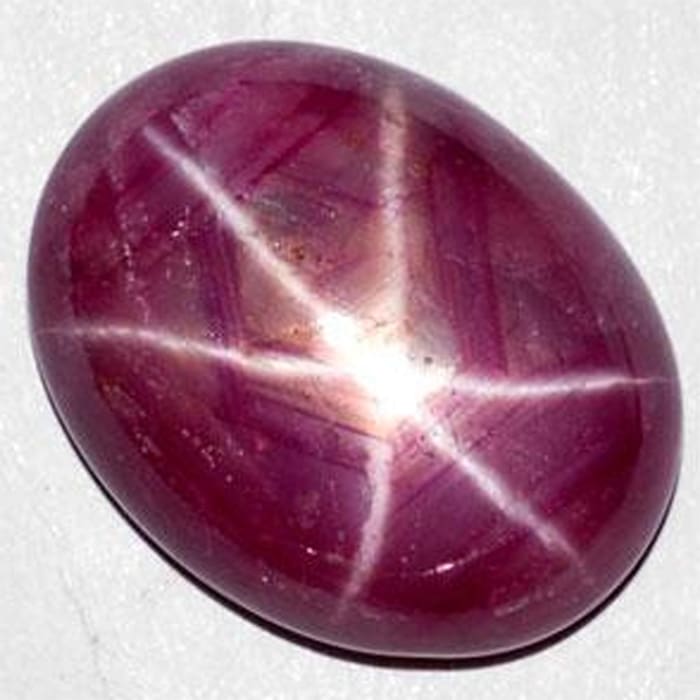Scientific Name: Corundum, and oxide of aluminum.
Group: Oxides
Chemical composition: Al2O3
Colors: Red.
Hardness: 9
Formation: Hexagonal – trigonal crystal; Pyramidal, prismatic barrel-shape form
Principal Sources: Thailand; Myanmar, Sri Lanka; Afghanistan; Madagascar; Vietnam; Cambodia; North Carolina, Montana, USA
Special Notes: The ruby is considered one of the four precious stones, together with the sapphire, the emerald, and the diamond. Its name comes from ruber, Latin for red. Blue varieties of gem-quality corundum are called sapphires. Some rubies show a 3-point or 6-point asterism or “star”. These rubies are cut into cabochons to display the effect properly. Asterisms are best visible with a single-light source, and move across the stone as the light moves or the stone is rotated. Such effects occur when light is reflected off the “silk” (the structurally oriented rutile needle inclusions) in a certain way. This is one example where inclusions increase the value of a gemstone. Furthermore, rubies can show color changes — though this occurs very rarely — as well as chatoyancy or the “cat’s eye” effect.

